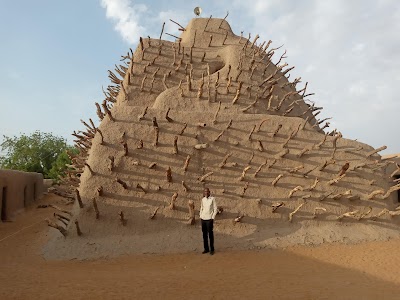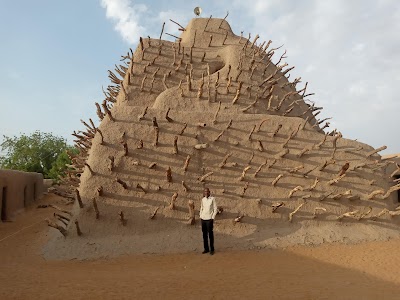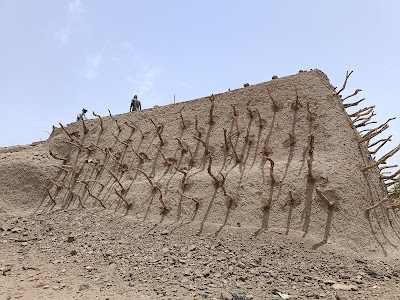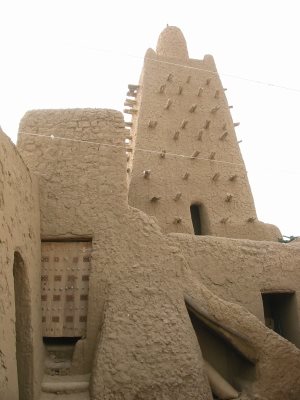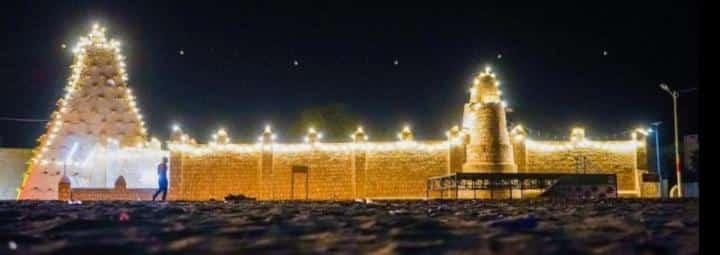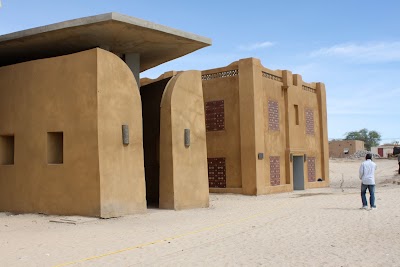Tomb of Askia (قبر أسكيا)
Overview
The **Tomb of Askia**, located in the historic region of Tombouctou (Timbuktu) in Mali, is a stunning cultural landmark that offers a captivating glimpse into the rich heritage of West Africa. Built in 1495 by Askia Mohamed, the first emperor of the Songhai Empire, this ancient monument serves as a remarkable testament to the architectural ingenuity and spiritual significance of its time.
Standing at an impressive height of 17 meters, the tomb features a unique mud-built pyramid structure. One of its most striking characteristics is its design, which skillfully blends traditional Sahelian architecture with Islamic influences, reflecting the spread of Islam throughout the region during that era. The use of locally sourced materials, such as mud and timber, highlights the resourcefulness and craftsmanship of the people who constructed it.
Historical records indicate that Askia Mohamed commissioned his tomb to showcase his piety and dedication to Islam during a period when the Songhai Empire was thriving as a center of trade, culture, and education. The empire extended across present-day Mali and parts of Niger and Nigeria, solidifying its status as one of the most powerful states in African history. Thus, the tomb transcends its role as a mere burial site; it symbolizes the pinnacle of Songhai power and the flourishing of Islamic scholarship.
Visitors to the site will quickly realize that the Tomb of Askia is more than just a single structure. The complex includes two flat-roofed mosques, a cemetery, and an open-air assembly ground—all of which played pivotal roles in the community's social and religious life. The mosques served as hubs for daily prayers and religious gatherings, while the assembly ground hosted various cultural and social ceremonies, reinforcing the tomb's significance in the regional community.
Recognized as a **UNESCO World Heritage site**, the Tomb of Askia is celebrated for its architectural brilliance and historical importance. However, being constructed from mud, it is vulnerable to natural wear and erosion, prompting numerous restoration efforts aimed at preserving its integrity. Visitors will appreciate the delicate balance between conservation and the authentic rural charm that this historic site embodies.
Intriguing stories surround the tomb, adding an air of mystery to its legacy. One legend suggests that Askia Mohamed concealed treasures within the pyramid's interior. While there is no conclusive archaeological proof to verify this tale, it certainly enhances the allure of the site.
Another fascinating aspect of the Tomb of Askia is its seamless integration into the daily lives of local residents. Visitors may witness artisans employing age-old construction techniques to maintain the structure, a practice that has been passed down through generations. This ongoing cycle of building and restoration underscores the community's commitment to preserving its rich heritage.
A trip to the Tomb of Askia is more than just a visit to an ancient monument; it is an immersive journey through time and culture. The surrounding region presents additional opportunities for exploration, including the renowned Timbuktu, often referred to as the “City of 333 Saints,” and the historic Great Mosque of Djinguereber, both within easy reach.
For those planning a visit, the dry season is the most favorable time, as the roads become more navigable. Guided tours are readily available, offering deeper insights into the history and significance of the site. Local guides are often well-versed in the legends and stories, enriching the narrative and enhancing the overall experience.
In conclusion, the **Tomb of Askia** is a compelling destination for history enthusiasts and cultural travelers alike. Its profound spiritual and historical significance, combined with captivating architecture and vibrant local traditions, make it an essential landmark to explore. As you wander through the grounds of this centuries-old site, you'll find yourself connected to the ancient world of the Songhai Empire and the lasting legacy it has imprinted on West African history.


